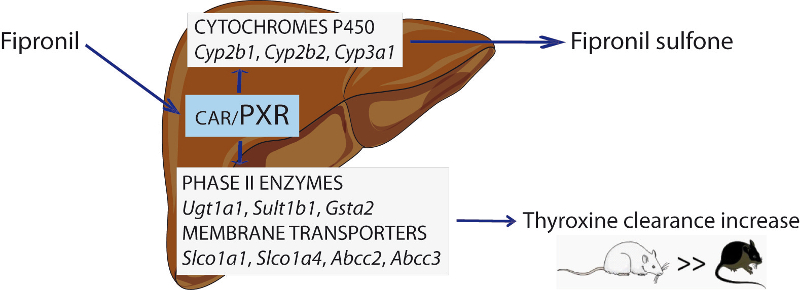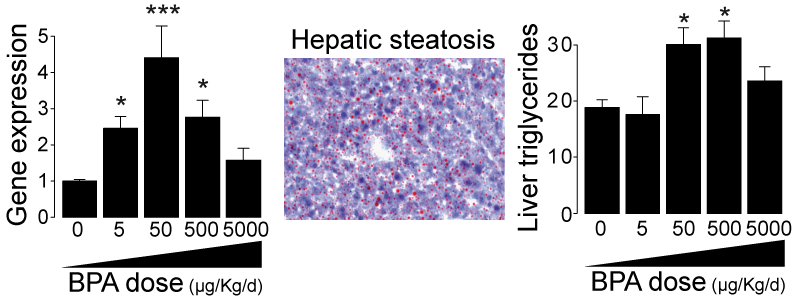 Toxicogenomics
Toxicogenomics
Food toxicology
In the context of the ToxAlim INRA research unit, I contributed to several research projects aiming at understanding the mechanisms and impacts of different food contaminants.
I managed with Thierry Pineau (2008-2009) and then H Guillou (2010-2011) the team that became in 2010 the group of Integrative Toxicology & Metabolism and then I developed and led the GeT-TRiX transcriptomic facility (2011-2015). During these years I supervised the work of 3 PhD students: Alexandre Eveillard (with T. Pineau), Béatrice Roques (with C. Viguié) and Nabila Moussaoui (with H. Houdeau) and contributed to significant projects, including:
- Using combined transcriptomics and metabolomics approaches, the work of A. Eveillard evidenced new pathways targeted by DEHP, the main phthalate plasticizer that can leak from food containers and contaminate food products at their contact ( Eveillard et al., Toxicol Appl Pharmacol, 2009). In particular, we found that the nuclear receptor CAR was activated upon DEHP exposure ( Eveillard et al., Biochem Pharmacol, 2009).

- With Béatrice Roques, we studied the pathways by which fipronil, a very common phenylpyrazole insecticide, alters thyroid hormone homeostasis ( Roques et al., Tox Sci, 2012). We found that liver metabolic pathways involved in both xenobiotic and thyroid hormone metabolism were activated upon fipronil exposure and that the nuclear receptors CAR and PXR were involved in regulating the expression of the corresponding genes ( Roques et al., Biochem Pharmacol, 2013). We also generated preliminary evidences that this is associated with compensatory gene regulations in the thyroid gland itself ( Martin et al., Tox Appl Pharmacol, 2020

- Largely based on transcriptomic approaches, the work of A. Marmugi (advisor L Lakhal) allowed us to reveal non-monotonic effects of low doses of bisphenol A on liver gene expression and lipid storage ( Marmugi et al., Hepatology, 2013).

- With Nabila Moussaoui and Eric Houdeau, we studied how maternal separation and stress hormones alter intestinal permeability specifically in young rat pups ( Moussaoui et al., PLoS One, 2014).
These studies, as well as those listed below, provided important insights into the mechanisms and effects of several food contaminants, sometimes contributing directly to the assessement of the toxicity of these substances by regulatory agencies.